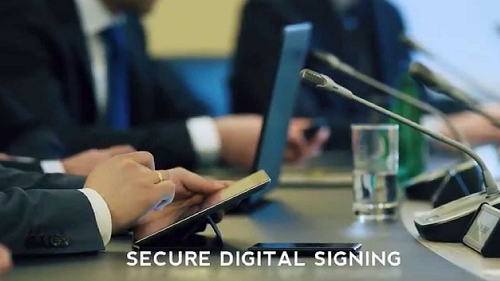
What is an e-cabinet?
Technology is now firmly ingrained in how governments are run all over the world. Even at cabinet level today, new digital technologies are supporting the decision-making processes, ensuring transparency of executive government decision making, cutting out high cost of preparing cabinets documentation, and dealing with the challenge of poor document control, and approval systems, as well as the slow rate in processing cabinet decisions.
A sure-fire way to deliver all the above in the decision-making process is to employ the use of e-cabinets. An e-cabinet can play a transformational role in streamlining and improving cabinet decision-making processes.
Advertisement
E-cabinet can be described as the use of digital technology solutions in running cabinet meetings and related institutional arrangements. The result of this is better decisions since the president and his cabinet are empowered with real-time information and knowledge needed in the selection of options. An e-cabinet system can ensure all processes within the government decision-making process from preparations, submission, and approval are all synchronized with cabinet schedule and meetings. Another important strand of e-cabinet system is that it facilitates improved communication between government ministries, departments, and agencies, meaning cabinet decisions are communicated to these entities.
How does it work?
At the centre of any e-cabinet system is a multi-level real-time database store of relevant documents for all aspects of a governance machinery, a calendar system that ensures effective scheduling of meetings and related activities, process mapping, and an information management system.
The system keeps relevant, organized information available at the touch of a button, thereby providing strategic insight for each agenda item to be discussed, options for consideration, and implications for those options. The system can capture cabinet members' positions on issues ahead of a cabinet meeting, allowing decisions that do not have any objections to be skipped so as to make time for items requiring detailed discussions.
Also, instead of cabinet members having to go through thousands of pages in cabinet documents, they can now search and scan through documents faster, saving time and enabling them to drill deeper into issues under consideration. Furthermore, in our COVID-19 world, where remote work and meetings are the norm, the e-cabinet system enables cabinet members to participate remotely.
E-cabinet systems come with numerous advantages such as improved access to high quality information needed for decision making, reduction in the complexity of running cabinet meetings, improvement of the effectiveness of running cabinets, better information sharing about government entities, a significant reduction in time needed to run cabinet meetings and ease of communicating approved cabinet decisions to citizens.
Key features of the e-cabinet system can be listed as;
- The processing of structured and unstructured data,
- Support information versioning at multiple levels so that different versions of documents are automatically tracked,
- Security which includes authorization and access to cabinet documents and the inclusion of digital signatures for every action performed on such documents and backup systems.
- Another key feature of the e-cabinet system is that it is built with a public website plug-in, which ensures approved content is shared automatically with citizens.
- Also, another important feature of the e-cabinet system is a track and trace function; in this direction, the status of all documents in the system are monitored to see, for example, the progress of work done on it, deadlines for completion of processing, and a cycle of approval.
Ghana, in 2015 started the use of Information Management Systems for Cabinet Secretariat (e-Cabinet system) with the vision of transacting important executive government business virtually without the need for face-to-face interactions. Ghana’s system includes the key features described in preceding paragraphs as well as ease of search and retrieval functions and an alert for outstanding tasks and new developments transmitted using SMS or emails. For example, when a cabinet memo is received and viewed by cabinet members, an alert is sent to the sender and when dates for cabinet meetings are fixed, an alert is transmitted to all expected attendees.
Thus e-cabinet systems solve a very important challenge: removing information asymmetries, which occur in the context of imperfect knowledge. E-cabinets tackle information asymmetries by making information available in real-time to all cabinet members and related parties.
In sum, this truly revolutionary piece of technology allows governments to take to streamline cabinet decision-making processes, improve the performance of the executive, enable efficiency and support the process of communicating cabinet decisions in a timely manner to citizens, in the true spirit of participatory democracy.
Kwami Ahiabenu, II is a Technology Innovations Consultant
E-mail: [email protected]



